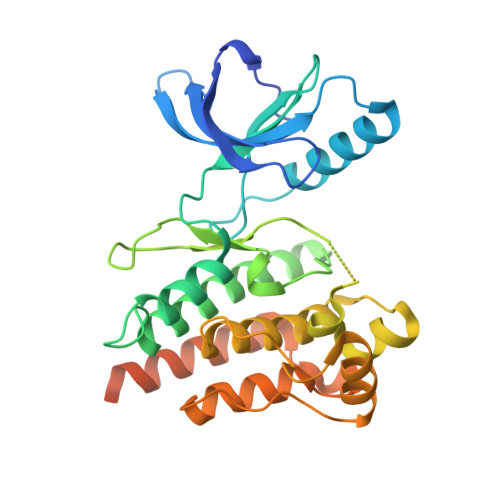Virtual Screening in the Cloud Identifies Potent and Selective ROS1 Kinase Inhibitors.
Petrovic, D., Scott, J.S., Bodnarchuk, M.S., Lorthioir, O., Boyd, S., Hughes, G.M., Lane, J., Wu, A., Hargreaves, D., Robinson, J., Sadowski, J.(2022) J Chem Inf Model 62: 3832-3843
- PubMed: 35920716
- DOI: https://doi.org/10.1021/acs.jcim.2c00644
- Primary Citation of Related Structures:
7Z5W, 7Z5X - PubMed Abstract:
ROS1 rearrangements account for 1-2% of non-small cell lung cancer patients, yet there are no specifically designed, selective ROS1 therapies in the clinic. Previous knowledge of potent ROS1 inhibitors with selectivity over TrkA, a selected antitarget, enabled virtual screening as a hit finding approach in this project. The ligand-based virtual screening was focused on identifying molecules with a similar 3D shape and pharmacophore to the known actives. To that end, we turned to the AstraZeneca virtual library, estimated to cover 10 15 synthesizable make-on-demand molecules. We used cloud computing-enabled FastROCS technology to search the enumerated 10 10 subset of the full virtual space. A small number of specific libraries were prioritized based on the compound properties and a medicinal chemistry assessment and further enumerated with available building blocks. Following the docking evaluation to the ROS1 structure, the most promising hits were synthesized and tested, resulting in the identification of several potent and selective series. The best among them gave a nanomolar ROS1 inhibitor with over 1000-fold selectivity over TrkA and, from the preliminary established SAR, these have the potential to be further optimized. Our prospective study describes how conceptually simple shape-matching approaches can identify potent and selective compounds by searching ultralarge virtual libraries, demonstrating the applicability of such workflows and their importance in early drug discovery.
Organizational Affiliation:
Hit Discovery, Discovery Sciences, BioPharmaceuticals R&D, AstraZeneca, Gothenburg 431 50, Sweden.
















